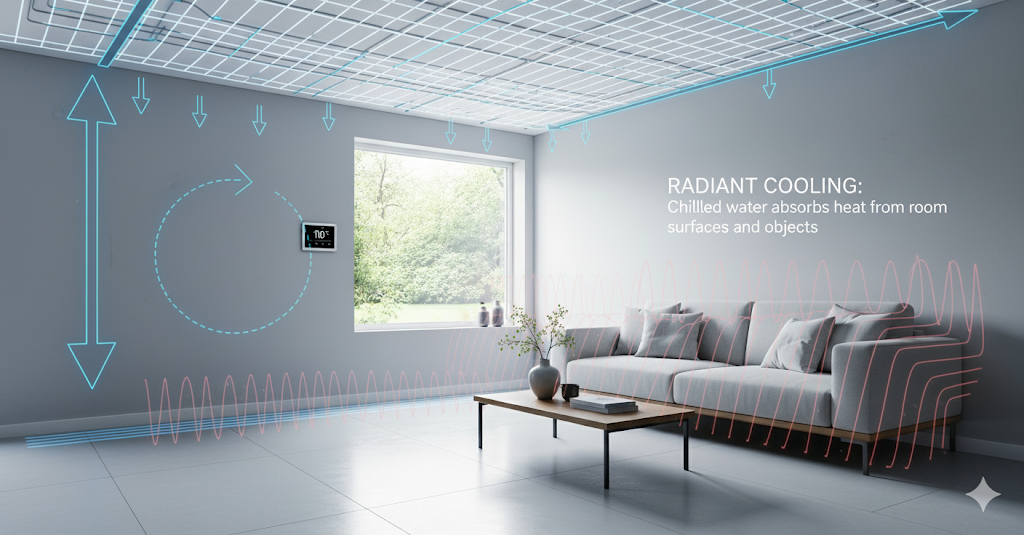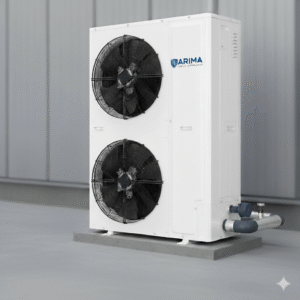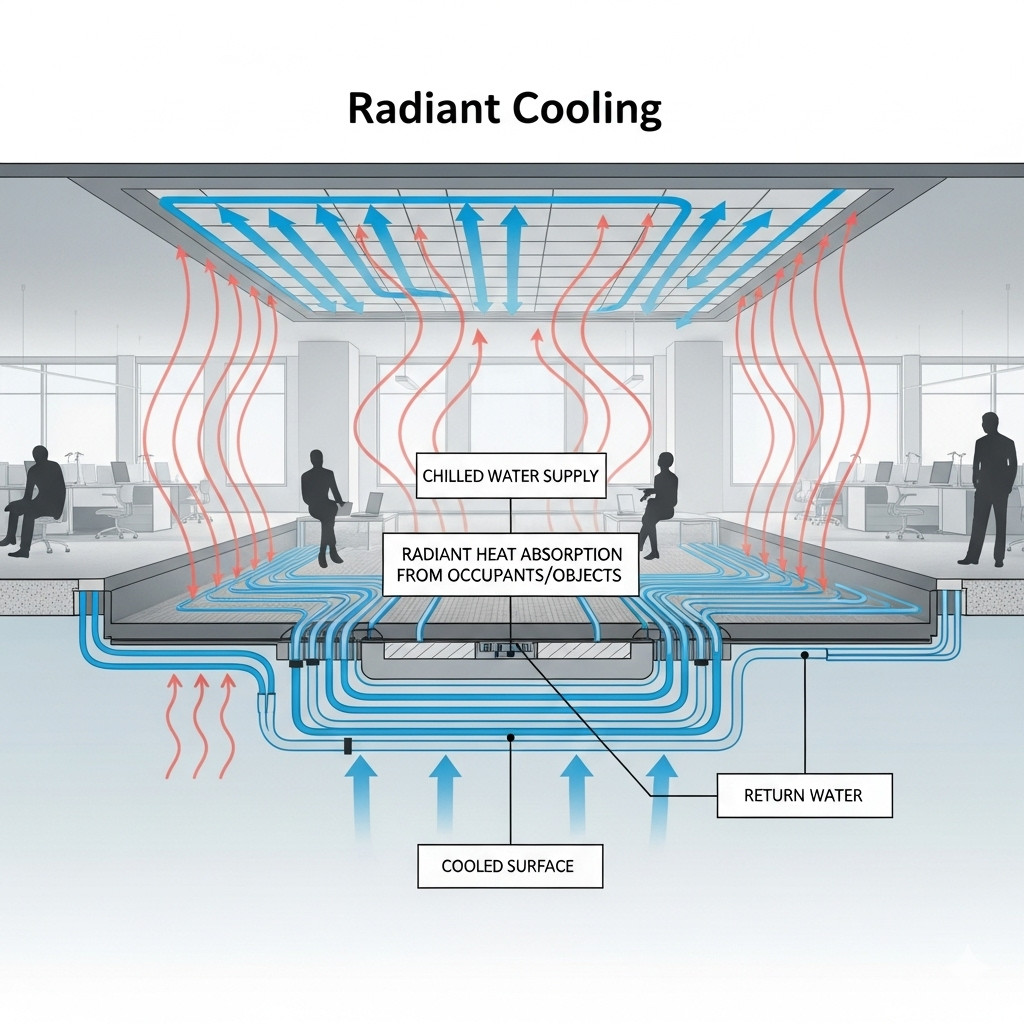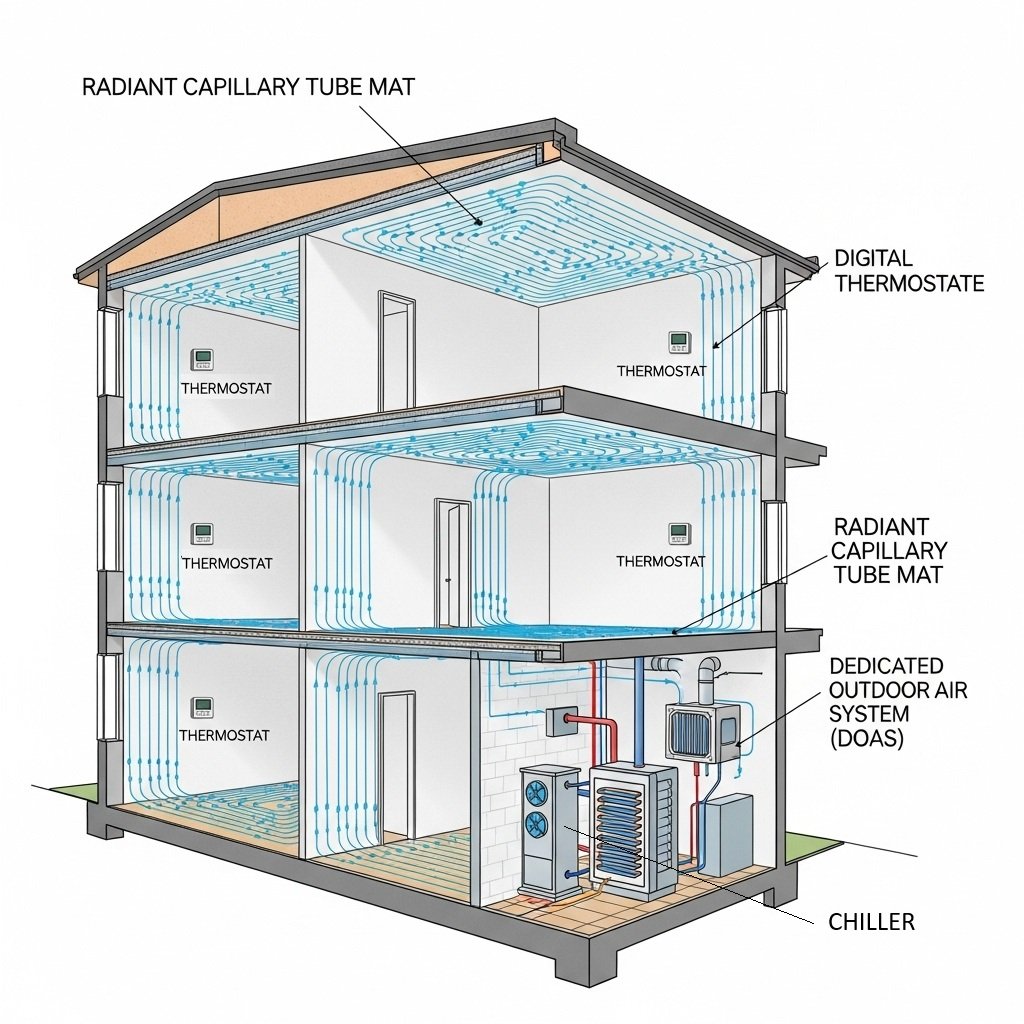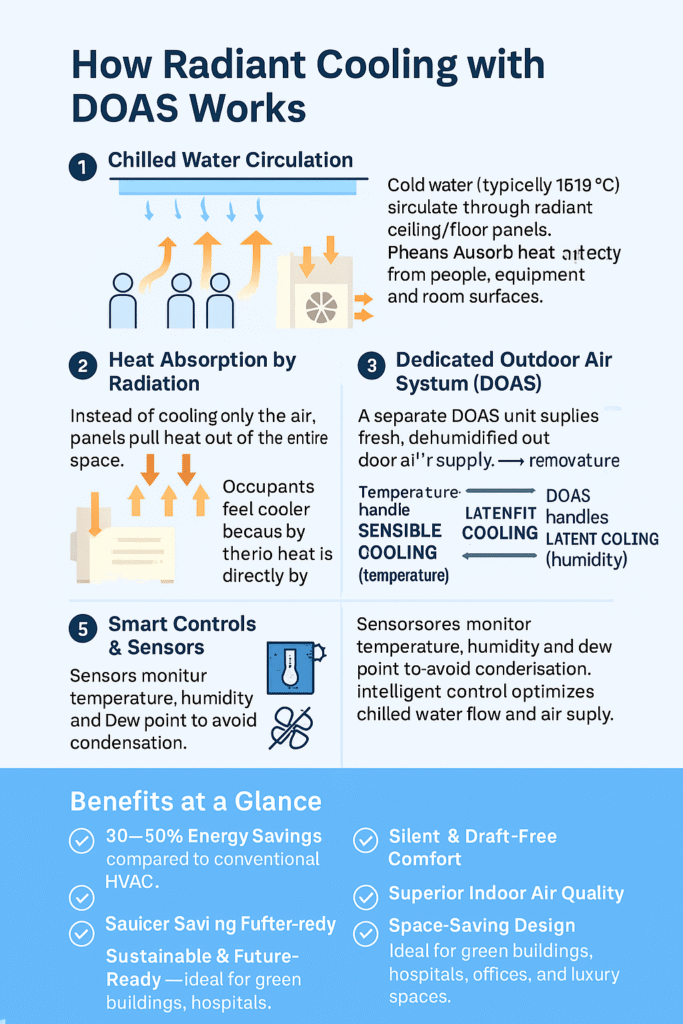Radiant cooling works by circulating chilled water (typically 16–18 °C) through panels embedded in ceilings, walls, or floors. These panels absorb heat directly from people, equipment, and room surfaces through radiation and natural convection, rather than cooling only the air. Because water is 4,000 times more effective than air at transporting heat, radiant systems can deliver the same cooling effect with far less energy. To manage humidity and fresh air supply, radiant cooling is paired with a Dedicated Outdoor Air System (DOAS), which removes moisture (latent load) and provides clean, dehumidified ventilation. This split approach ensures precise temperature and humidity balance while preventing condensation.
